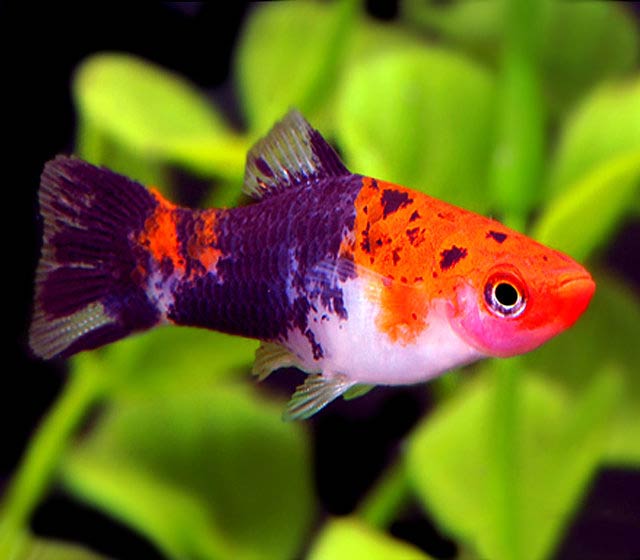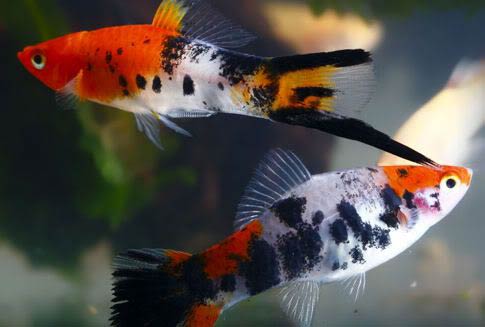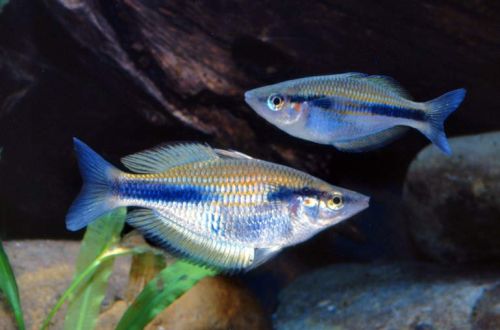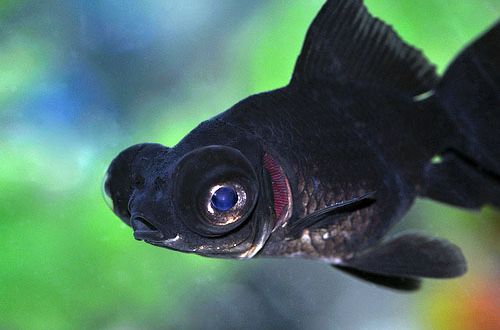
Calico swordsman
Calico swordtail, scientific name Xiphophorus hellerii (Showa breed), belongs to the Poeciliidae family. The fish got its name because of the peculiarity of the body color, reminiscent of the coloring of the decorative Japanese Koi carp of the Showa breed of the same name.

There are three primary colors in the color: white, red (or orange) and black. The latter is presented in the form of spots and specks, concentrated mainly in the tail part of the body. Depending on the population, the amount of black pigment may become predominant.
A similar body pattern has another related species – the Swordsman Sanke, which is distinguished by the smaller size of the specks. Since populations from different breeders have a unique set of spots, often the differences between two breeds are so slight that it becomes almost impossible to tell one from the other.
Brief information:
- The volume of the aquarium – from 100 liters.
- Temperature – 16-28°C
- Value pH — 7.0–8.0
- Water hardness – soft to high (10-30 dGH)
- Substrate type – any
- Lighting – moderate or bright
- Brackish water is permissible in a salt concentration of up to 15 g per 1 liter
- Water movement – light or moderate
- The size of the fish is 7–10 cm.
- Food – any food
- Temperament – peaceful
- Content alone, in pairs or in a group
Maintenance and care

Like most other representatives of the Viviparous group, the Calico Swordsman is considered easy to keep. The fish is able to adapt to a wide range of temperatures and values of hydrochemical parameters, it is not demanding on the choice of design. Can live in brackish water.
In some cases, it will require minimal costs. For example, in a species aquarium, the absence of a heating system is acceptable, and in large volumes of water and a small number of fish (1–2 per 100 liters), a simple airlift filter will suffice.
Maintenance of the aquarium includes standard procedures – this is a weekly replacement of part of the water (15–20% of the volume) with fresh water and the removal of accumulated organic waste (not eaten food residues, excrement).
Food. Accepts most types of food of a suitable size with pleasure. A varied diet of dry, frozen and live food is recommended. However, the daily diet can also consist of their usual flakes, granules.
behavior and compatibility. They peacefully coexist both with representatives of their own species and with other freshwater fish. Avoid aggressive and territorial tankmates.
It is worth remembering that Swordtails can interbreed with closely related species (Pecilia, Mollies) and give hybrid offspring, so the possibility of joint keeping raises questions.





